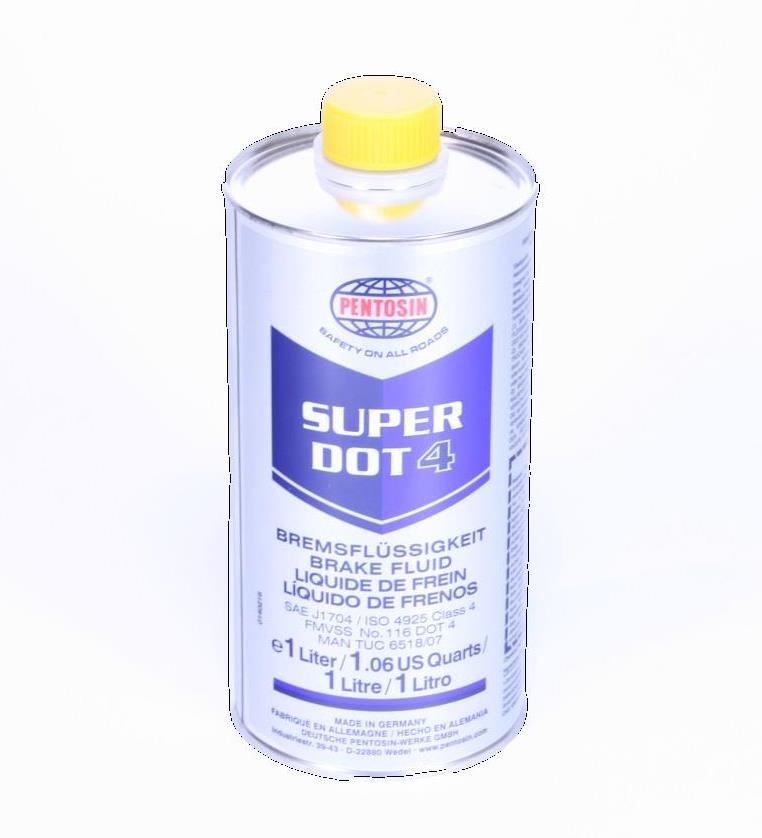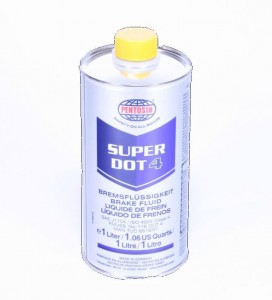Brake pads and brake fluid are two important yet often overlooked components of every braking system. Neither of these items has the same wow factor as a fancy rotor upgrade, but just like rotors, brake pads are wear parts that need proper attention so you can get the most out of your classic ride’s brake system. We can make the same case for your brake fluid too. Brake fluid is not a wear part in the traditional sense of the word, but over time, brake fluid goes bad.
So you’ve worn out the brake pads in your car, and it’s time for some replacements. Assuming the rest of the brake system is in good working order, what kind of brake pads should you score when you run to the local parts store? The answer to this question really depends on your application. Brake pads for the track are very different from the pads that will perform best on a daily driver. Here is just a quick run-down on some of the more common types of brake pads.
The least expensive option, organic pads are made manufactured by combining glass, Kevlar, or carbon with binding resins. Organic brake pads tend to be easier on rotors and relatively quiet. Most OEMs use organic pads on new cars since they don’t require much heat to generate the friction needed to stop the car. That said, organic pads have a very limited temperature range. In short, organic pads may be a good bet for daily commuting and cruising around town but they would be a dog at the track.
Semi-metallic brake pads are made by combining steel wool, iron, or copper, with fillers, friction modifiers, and lubricants like graphite. Semi-metallic brake pads sport higher operating temperatures than less expensive organic pads and they are designed to draw heat from your rotors. They also have longer service lives than organic pads, but semi-metallic pads wear rotors faster and produce more brake dust. You’ll also need to produce more heat to have them stop your car properly. If you are thinking about taking your car to the track, or you are a particularly aggressive driver, semi-metallic pads may be the right ticket.
As the name might suggest, ceramic brake pads are manufactured by combining ceramic fibers with an appropriate mix of fillers and binding agents. Ceramic pads typically last longer than organic pads, but they are also quiet and rotor-friendly like organics. They stand up to heat better than organic pads, but they don’t offer the same heat resistance as semi-metallic pads. Ceramic pads are also a good choice for owners looking to avoid the constant ritual of cleaning brake dust from their shiny wheels, but if you drive your car hard, you may be disappointed with the performance.
The bottom line is that each style of brake pad has a different friction material and will perform in different ways. More expensive pads do not always translate into better performance–make an educated choice and understand what you are buying. If the choices are too overwhelming, give us a call, and we’ll keep it easy for you. We offer the Hawk HPS pads as replacements and upgrades for almost every kit that we sell (they are standard on our Street Pack Series) and have found them to be the best option for most of our customers, but again, it depends on how you drive.
Now that we have discussed the brake pads let’s talk brake fluid. If you haven’t changed the brake fluid in over a year, you are past due (Don’t worry, we are in the brake business and we aren’t any better). Brake fluid is hydroscopic and absorbs moisture, so it requires regular maintenance. Just like the brake pads, there are dozens of choices at your local parts store–everything from the store brand DOT 3 fluid that costs as little as a dollar to the higher end synthetic fluids that are as much as twenty dollars per can. Again, the same rules that apply to selecting brake pads apply to brake fluid: the more expensive option is not always the best option. Some of the fluids available for racing applications might perform well when used in those conditions but might not be right for the street. Our recommendation is to go with a high quality DOT 4 fluid such as the Pentosin Super DOT 4 Synthetic fluid. The higher quality fluids offer a chemical makeup that is more resistant to moisture and contain the proper rust inhibitors we need for our classic cars.
The bottom line is don’t forget the parts and pieces that you can’t see. Your brakes, air conditioning components, and transmission system are all largely out of sight, but these systems require regular, preventative maintenance. When replacing key components of these systems, remember, price should not be the sole factor driving your decision–spend some time thinking about your application.


